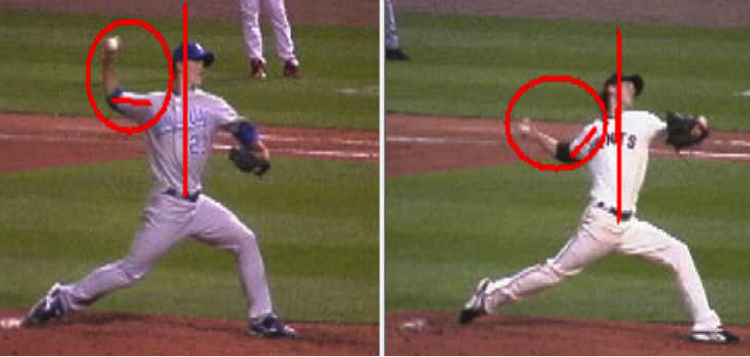
Baseball Injuries: Are Pitchers Really Getting “Babied?”
Today, I want to tackle another argument that gets thrown out there a lot nowadays in the baseball world:
“Pitchers are getting hurt because we’re babying them.”
Usually, this phrase comes from more of an “old school” coach who simply doesn’t appreciate how substantially the game has changed over the last 20-30 years. Flash back to the 1980s and 1990s, and you’ll see the following differences:
1. Kids weren’t heavily abused with year-round baseball at a young age, so there weren’t as many damaged goods arriving in collegiate and professional baseball.
2. Strength and conditioning was simply non-existent at all levels. As quantifiable proof of this evolution of the game, recent research has shown that the average MLB player’s body weight increased by roughly 12% between 1990 and 2010. Bigger, stronger athletes throw harder – and guys who throw harder get injured more frequently. All those guys who threw 86-90mph in the 1980s would be out of jobs if they played nowadays and didn’t strength train.
3. Video analysis was archaic back then as compared to now. Nowadays, throwers at all levels can optimize mechanics much more easily with the help of technology. Better mechanics should reduce injuries, but we have to realize that optimizing mechanics usually also equates to greater velocity. Efficient movement is efficient movement, so this is likely a “wash” in terms of injury risk.
4. Travel wasn’t as stressful at the professional level. The game has expanded to include more teams (which equates to more travel) and nastier time zone changes. That wreaks havoc on players more than the typical fan realizes.
5. The season was slightly shorter. This is likely a trivial difference, but with the expansion of the wild card at the MLB level – as well as the World Baseball Classic every few years – the season has been stretched out a bit. Anecdotally, it seems that more and more players are heading out to play winter ball as well.
6. There weren’t nearly as many guys throwing cutters and hard sliders. These pitches are commonly thrown incorrectly, and when that’s the case, they aren’t very friendly on the elbow. The pitchers of yesterday weren’t throwing 92mph sliders and 100mph cutters.
7. The pitching side of the game wasn’t as specialized. Nowadays, outside of starters, you have set-up guys, lefty specialists, righty specialists, and closers. It seems counterintuitive, but the more specialized a pitcher you are, the more likely you are to pitch frequently. And, this doesn’t just include getting into games, but also the number of times pitchers throw in the bullpen, but don’t go in the game (a scenario that is not-so-affectionately known as a “dry hump” in professional baseball).
8. Sports medicine wasn’t as advanced. This is a bit of a leap of faith, but I’d say that modern medicine has made it possible for pitchers at the highest level to throw through a lot more arm discomfort than in previous decades. The anti-inflammatories/analgesics are more powerful and they’re sometimes handed out like candy, so you have a lot of scenarios where minor issues become major injuries over the course of time because they’re masked pharmaceutically.
Take these eight points all together, and you realize that we have taken already damaged pitchers and provided them with tools (strength and conditioning and video analysis) to help them move at greater velocities than ever before, throwing more stressful pitches than ever before – and then pushed them out into a longer and more stressful competitive calendar than ever before – where they pitcher more frequently than ever before. And, sports medicine has trended more toward making it easier for them to push through injuries than preventing injuries in the first place.
How the heck does that equate to us “babying” them?
This is on par with sending an experienced racecar driver out to the Daytona 500 track in a beat-up old lemon and having him drive it as fast as he can for 250 days per year. Would you be surprised if the car broke down, or the driver crashed and was injured? Would you say that the car or driver was “babied?”
Go ahead and let all your starters throw 150 pitches per game, and leave ‘em out there for 300 innings. Dry hump all your relievers until they don’t sit down in the bullpen all season. And, be sure to let me know how it goes.
The current system hasn’t “babied” pitchers; the pitch count and innings restrictions were a response to the dramatic changes to the game that have effectively destroyed the long-term health of pitchers. Look at the velocity drops (and, in some cases, injuries) of CC Sabathia, Tim Lincecum, Josh Beckett, Dan Haren, Mark Buerhle and others who have racked up a lot of innings at a young age. While other players their ages may be able to preserve (or even increase) their velocities, these guys are on the steady downslope. Do you really think the problem is that they haven’t pitched enough?
This leads to a very important clarification I should make: I’ll agree that pitchers need to throw more – but only if that means they pitch less. In other words, we need to get them away from specificity. We know too much specificity hurts them – and we also know that pitching off the mound generally increases arm stress as compared to flat-ground throwing, especially when that mound work is highly competitive. Whether it’s long toss, weighted balls, flat-ground work, or a combination of all these things, players need to find a way to build or preserve arm speed without the stress of the mound.
On the whole, pitchers aren’t being babied. In fact, in most cases, they’re being pushed more than ever before – and if you just keep pushing, something will always give.





